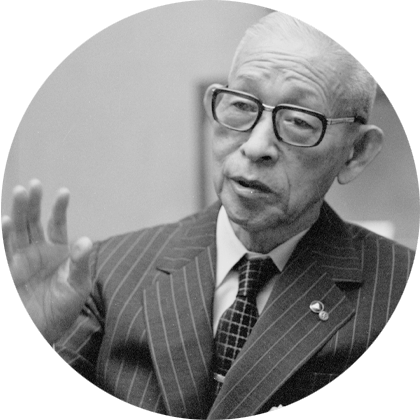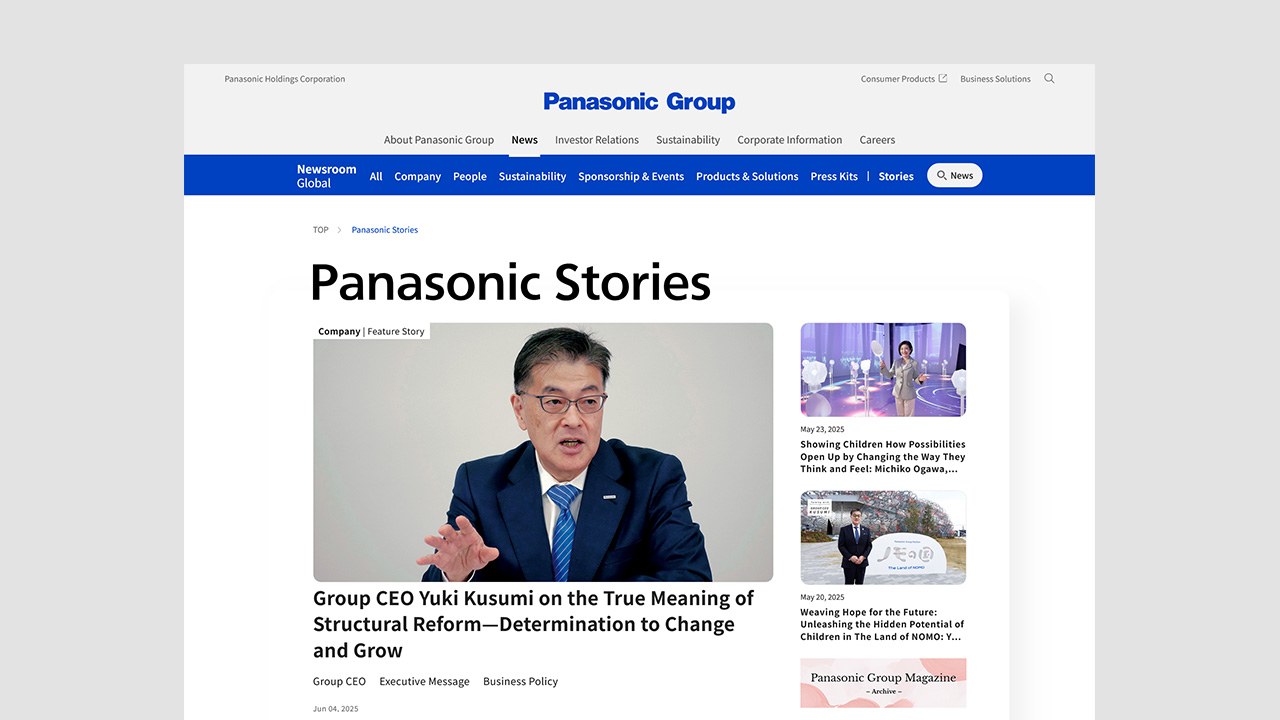Pick up
Long-Term Environmental Vision
Panasonic GREEN IMPACT
The Panasonic Group aims to achieve both a better life and a sustainable global environment, by creating impacts from actions that reduce our own CO2 emissions, contribute to avoiding CO2 emissions of society, and realize a circular economy.
New owned communication platform
Panasonic Stories
Panasonic Group has launched “Panasonic Stories,” a new communication platform. Its purpose is to share the Group’s vision in our own voice, and to share its initiatives through the stories of our people. We will deliver timely, in-depth, and reader-friendly content covering the Group’s vision, initiatives, and commitment to embracing new challenges.
Konosuke Matsushita - Words of Wisdom

Words of knowledge and insight spoken by Konosuke Matsushita, founder of Panasonic, are presented each week.
Words of knowledge and insight spoken by Konosuke Matsushita, founder of Panasonic, are presented each week.
Global Network
*Panasonic Holdings Corporation (“PHD”) has formed a strategic joint partnership with the Apollo Group in the business of Panasonic Automotive Systems Co., Ltd. (“PAS”). As a result, PAS is no longer a consolidated subsidiary of PHD, and Star Japan Holdings (including PAS as a sub-subsidiary) has become an equity-method affiliate of PHD. For more information, please refer to the following news release.
https://news.panasonic.com/global/press/en241202-6











